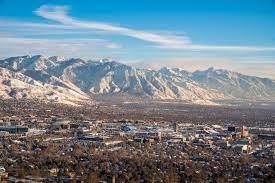Utah Air Quality

To view current air quality conditions in Utah, visit the Air Quality Index.
Air quality measures how much pollution is in the air. Air pollutants are any biological, physical, or chemical particles found in ambient air that are harmful to the environment and human health. Pollutants can come from many everyday human activities like driving a car and using wood-burning fireplaces. They can also come from environmental sources like wildfires and dust storms. The greatest contributors to poor air quality are emissions and by-products of industrial processes from factories, refineries, and power plants.
For more suggestions, please visit these websites for more ideas:
Why it's important
For more information on the importance of air quality visit the Utah EPHT website.Who is at risk
Air pollution affects everyone, but certain people are more susceptible to its effects. Sensitive populations include people with lung or heart issues, young children, and older adults.How it is tracked
The Utah Environmental Public Health Tracking Network receives air quality data from the Air Quality Division of the Utah Department of Environmental Quality and from the Environmental Protection Agency.What is known
In 2020, 11 Utah counties had at least 1 day where the 8-hour average ozone concentration was above the National Ambient Air Quality Standard. Data on ozone levels are only available where air monitors exist and mainly monitor ozone during the summer months. In 2019, 75% of days monitored for the Air Quality Index were rated "good." Twenty-three percent of days monitored were considered moderate. There were also 63 days where the Air Quality Index was unhealthy for sensitive groups, however, this accounts for only 1% of days monitored.Who is at risk and how to reduce it
Air pollution affects everyone, but certain people are more susceptible to its effects. Sensitive populations include people with lung or heart issues, young children, and older adults. Even though we may assume that our individual choices do not affect air quality, they do. Reducing air pollution and improving air quality is everybody's responsibility:- Conserve energy by turning off lights and appliances when you're not using them
- Recycle paper, plastic, glass bottles, cardboard, and aluminium cans
- Shop with a canvas bag and avoid using paper and plastic bags
- Plan your trips with your automobile
- Instead of using your car, use public transportation, ride a bike, or walk
For more suggestions, please visit these websites for more ideas:
- See how your choices make a difference in Utah's air quality - UCAIR Utah Clean Air Partnership
- Ways to Reduce Air Pollution - U.S. Environmental Protection Agency
How it's tracked
The Utah Environmental Public Health Tracking Network receives air quality data from the Air Quality Division of the Utah Department of Environmental Quality and from the Environmental Protection Agency.Air Quality
Smoke Days from Wildfires
Air Quality Conditions
Resources
- UCAIR Utah Clean Air Partnership
- Air Pollution and Public Health in Utah - Utah Environmental Epidemiology Program
- The Plain English Guide to the Clean Air Act - U.S. Environmental Protection Agency
Program Websites
- Utah Department of Environmental Quality - Division of Air Quality home page
- Centers for Disease Control and Prevention - Air Quality
